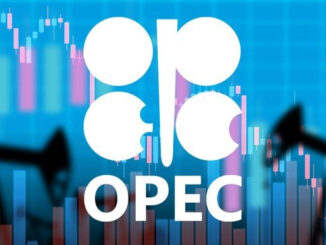
Energy Intelligence balances show the world should have enough crude oil through 2023 if some spare capacity is tapped, with a wider margin of error if an Iran nuclear deal can be clinched. Tepid demand from still-high prices for refined products like gasoline and diesel could also loosen markets, as energy costs have been a key driver of recent inflation in the global economy — particularly high natural gas prices. Global economic recession can not be ruled out, and balances could shift significantly over the next 16 months in response to various events. Russia’s ability to continue exports — particularly products — and the global refining sector’s capacity to meet consumption must be closely watched. Based on traditional economic growth assumptions and expected pent-up pandemic demand, Energy Intelligence sees product demand growing by 2.1 million barrels per day in 2022 and 1.9 million b/d in 2023. In both years, we envision a small supply surplus, which would help replenish inventories — first for crude, then for refined products. But the effects of the Ukraine war, including sanctions, add significant uncertainty to a market already facing economic upheaval and a low-carbon energy transition.
Russia is by far the biggest wildcard. With some exceptions, EU sanctions will by Dec. 5 ban the remaining 1.7 million b/d of Russian crude that the bloc imports, while the 1 million b/d of Russian refined products it still purchases must cease by Feb. 5, 2023. Even if Russia can find new buyers for this oil, it may not be able to ship it without issues due to proposed EU restrictions on shipping and insurance, which will impact the bulk of the global tanker fleet. Without loopholes on the shipping rules, the world could face shortages, especially for products. Shipbrokers think a non-Western fleet of tankers — using sovereign Russian or Chinese insurance and financing — could still carry most of Russia’s crude. But there are not enough tankers for products. To keep these products sailing, workarounds are needed. The US, UK, EU and South Korea are discussing a price cap system for Russian oil where traders could use Western tankers if they stick to the price cap. But analysts fear Russia could restrict its crude and product exports in response, much like it is now inflicting pain on Europe by reducing natural gas flows, prompting electricity prices on the continent to surge fivefold from a year ago.
Even if most Russian oil keeps flowing, there is still the global refining crunch to consider. Several refineries are due to start up this year and next, but everything must go right to ensure the industry can add the capacity needed to meet rising demand. Global refining capacity additions of about 3 million b/d are slated in 2022 and 2023, but this is not enough to offset the 4 million b/d of throughput capacity lost during the pandemic. China is starting up 800,000 b/d, but this may not matter much since its product export volumes have dwindled. Running China’s refineries harder could lower the country’s product imports and free up products for the region. The US will add some 350,000 b/d, offsetting closures, while the former Hovensa refinery in the US Virgin Islands could restart at 200,000 b/d. The Mideast is key for the world, with a total 1.4 million b/d in additions. India will start up 135,000 b/d, and Malaysia will restart 300,000 b/d. Nigeria’s 650,000 b/d Dangote refinery and Mexico’s 340,000 Dos Bocas refinery are also scheduled to start up soon, but timelines for both could slip into 2024.
Downstream supply volumes will be key for prices — for both crude and products. Oil demand will grow in the coming months as the Northern Hemisphere prepares for winter, and much like last year, fuel-switching away from expensive natural gas could tighten oil markets. Lagging Chinese demand could also rebound, although it could largely be met by China’s domestic refining industry. Fuel switching is likely to be higher and last longer than in the 2021-22 winter as Europe is already switching to preserve natural gas storage. Total fuel switching, including in the Middle East and Asia-Pacific, could ramp up to 1 million b/d at the peak, which would be met by diesel and low-sulfur fuel oil.
The US, Norway, Saudi Arabia and the United Arab Emirates are expected to increase liquids production the next couple months. That will add 1 million b/d to global supply in the short term, with an additional 2 million b/d next year — even after accounting for an estimated loss of 1.3 million b/d of Russian volumes. Iran could add up to 1 million b/d from early next year in case of a nuclear deal.
| STAYING IN BALANCE IN AN UNCERTAIN WORLD | ||||||||||
| (million b/d) | Q1’22 | Q2’22 | Q3’22 | Q4’22 | 2022 | Q1’23 | Q2’23 | Q3’23 | Q4’23 | 2023 |
| Total Demand | 98.5 | 97.4 | 99.9 | 102.4 | 99.6 | 101.0 | 100.0 | 101.7 | 103.2 | 101.5 |
| OECD-34 | 45.8 | 45.2 | 46.7 | 47.8 | 46.4 | 47.0 | 46.0 | 47.5 | 48.2 | 47.2 |
| Non-OECD | 52.7 | 52.2 | 53.2 | 54.6 | 53.2 | 54.0 | 54.0 | 54.2 | 55.1 | 54.3 |
| Total Supply | 98.2 | 98.3 | 101.0 | 101.3 | 99.7 | 101.7 | 101.5 | 102.0 | 101.7 | 101.7 |
| Opec Crude | 28.1 | 28.4 | 29.4 | 29.9 | 28.9 | 30.0 | 29.9 | 30.1 | 30.1 | 30.0 |
| Opec NGL/Cond | 5.4 | 5.3 | 5.3 | 5.4 | 5.3 | 5.4 | 5.3 | 5.3 | 5.4 | 5.4 |
| Non-Opec | 62.5 | 62.3 | 64.0 | 63.7 | 63.1 | 63.9 | 63.8 | 64.1 | 63.6 | 63.9 |
| Processing Gain | 2.2 | 2.3 | 2.4 | 2.4 | 2.3 | 2.4 | 2.5 | 2.5 | 2.5 | 2.5 |
| Stock Change | -0.3 | 0.9 | 1.1 | -1.1 | 0.1 | 0.7 | 1.4 | 0.4 | -1.6 | 0.2 |
| Source: Energy Intelligence | ||||||||||



